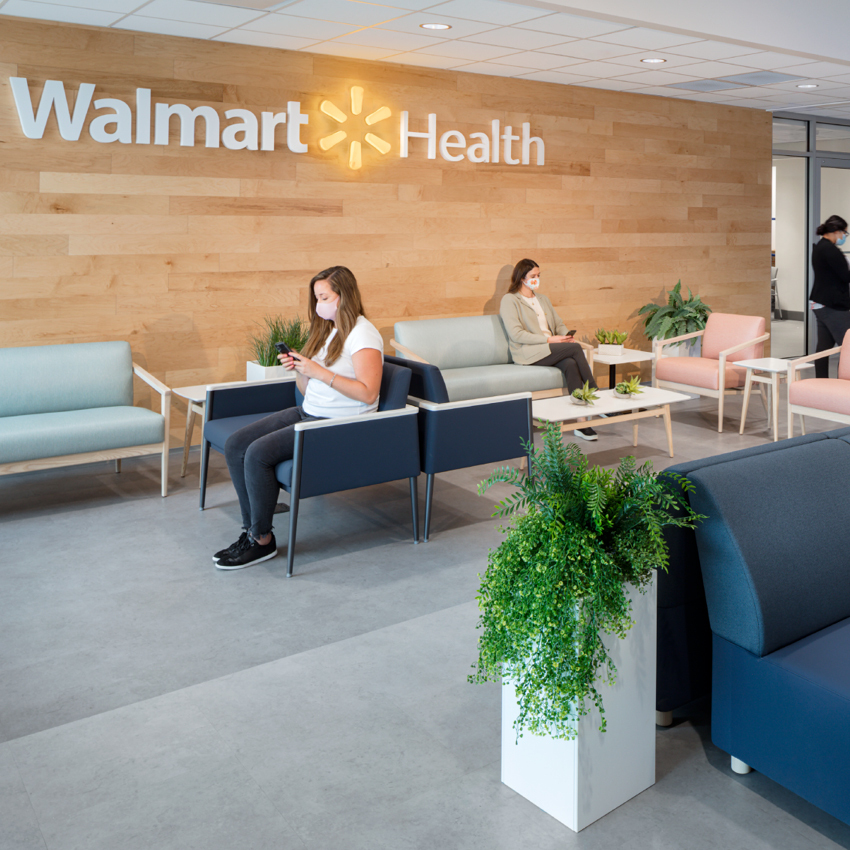Young couples oftentimes struggle in the early years of their marriage as they both adjust to the new life dynamics of sharing everything from bedsheets to bank accounts, and it’s a metaphor that could aptly be used to characterize a great many retail and healthcare newlyweds. Some may argue that hospitals and primary care clinics are actually sheepish retail businesses dressed in wolves’ clothing – ones that happen to be, generally speaking, really, really bad at the customer-experience side of their businesses. Nonetheless, over the last decade, through fits and starts, many traditional retailers have begun testing the waters of healthcare services and products through an array of joint-ventures, cross-industry partnerships, and other similar tie-ups.
[callout]Telehealth and remote medicine that were somewhat fringe or experimental industries prior to the pandemic suddenly catapulted in relevancy during Covid-19. As larger and larger slices of retailers’ businesses move towards ecommerce, it’s only natural that the synergies with telehealth will become more apparent as well.[/callout]
Other retailers have taken a more organic approach, embarking on hiring sprees, plucking out top talent from health insurers, hospital networks, and digital health companies in an attempt at building healthcare appendages to their existing bodies of businesses, all seeking a share of America’s estimated $3.6 trillion annual spend on healthcare services.
Retail’s Foray into Healthcare
So far, neither approach has been a run-away success, but year after year, Big Retail continues to pour more money and near endless resources into healthcare initiatives in what might be charitably described as nothing less than outright dogged determination to make sure that a way to succeed is eventually found, no matter how long the process might take. For many, there is rarely a Plan B. The sustainability of the physical aspect of their business – and perhaps the digital side as well – likely depends on making healthcare work.
Of course, having something make sense on paper is a lot different than finding success in practice. Some of the challenges encountered by retailers such as Walmart and Target – both of which pride themselves on high efficiency and scalability – is centered around the so-called ‘high-touch’ or bespoke aspects of delivering quality healthcare. No two individuals are alike and so even if, for example, two patients present similar flu-like symptoms, their medical histories and physiological makeups might be so different that entirely different treatments are required. No scale there.
Retail Healthcare Redefined
Many retailers see healthcare as a natural extension of their mission of providing the products and services that their customers already need through their own sales, marketing, and distribution channels. While the lockdowns that came in the wake of Covid-19 accelerated Americans’ embrace of ecommerce, an opposite and equal market force further squeezed traditional brick-and-mortar retail businesses – a phenomenon most readily visible by the endless chain of abandoned shopping malls across the country that Business Insider famously called a glimpse into our country’s ‘dystopian future.’ To triage this trend towards all-out suburban blight, in-person service-intensive business – be they health and fitness clubs, shared working spaces, or healthcare services – have been held up as a viable antidote by retailers and mall operators alike.
“It’s been a rocky road in some respects, but if there is one thing that traditional retail understands it is optimal customer experience, and that is why I believe retailers will eventually be the ones that take healthcare mainstream,” said Sara Ratner, the former General Counsel and Head of Strategic Initiatives of Minute Clinic, the first large-scale retail healthcare chain in the U.S. which is now owned by CVS. “It’s still early days, but every major brick-and-mortar retailer will have to end up offering some form of healthcare service if they want to stay relevant and continue to get foot and online traffic; otherwise, consumers will go elsewhere.”
Of course, just as retail is trying to find a way to make their marriage with healthcare work, the opposite is also happening, as an array of industry incumbents and startups are looking to more fully embrace their retail DNA by bringing more accessible and better customer-service oriented offerings to the public. From well-heeled start-ups like One Medical to savvy disruptors like The Good Clinic to large hospital systems like M Health Fairview at the Mall of America, the business of traditional primary care services is becoming decidedly more Starbucks and considerably less St. Elsewhere.
“I think that it’s inevitable that much of consumer-facing healthcare will be embraced by big retail eventually. We already see that happening with massive investments into healthcare initiatives from everyone from Best Buy to Walmart. And, of course, big pharmacy chains such as Walgreens and CVS have played in this space for years,” noted Frank Jaskulke, the Vice President of Intelligence of the Medical Alley Association, one the country’s leading healthcare and medtech trade associations. “But like any pair of newlyweds, it will take some time to get the kinks out – these are two fundamentally different businesses. One is highly regulated and purposely cautious, with a complex payment structure, while the other is highly transactional and heavy on marketing and ‘deals’; this merging will happen eventually, but it will take some time.”
Telehealth
The other big trend that plays a central role in the discussion around retail and healthcare is the rise of telehealth and remote medicine – somewhat fringe or experimental industries prior to the pandemic that suddenly catapulted in relevancy during Covid-19. As larger and larger slices of retailers’ businesses move towards ecommerce, it’s only natural that the synergies with telehealth will become more apparent as well.
“These two industries – primary healthcare and traditional physical retail – really need each other to survive,” observed Pat Milan, the Chief Insights Officer at Tunheim, a leading strategic consulting firm that is often hired by both large hospital systems as well as major retailers to figure out how to best position themselves for the future. “It’s not an easy marriage as these two industries couldn’t be further apart culturally or in terms of their operating and business models, but they need each other – and they both know it.”
“Eventually they will click,” added Milan. “And when that day comes, the patient-consumer experience will make us – or our grandchildren – wonder how we ever put up with the status quo.”




